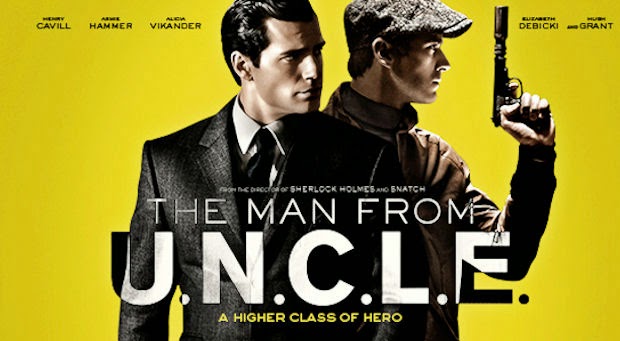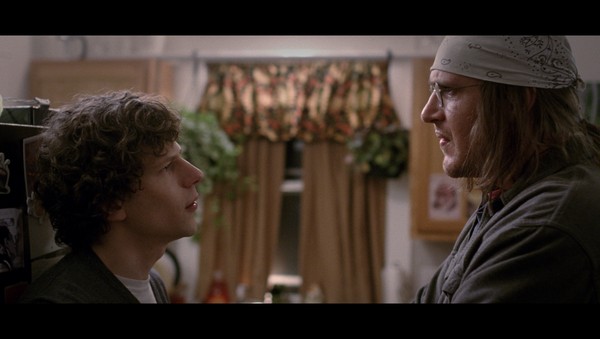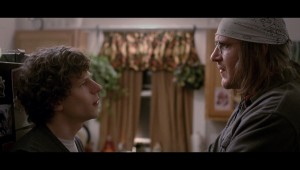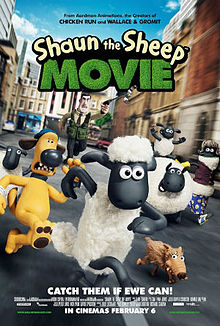The Man from UNCLE
Posted on August 13, 2015 at 5:34 pm
B+| Lowest Recommended Age: | Middle School |
| MPAA Rating: | Rated PG-13 for action violence, some suggestive content, and partial nudity |
| Profanity: | Brief crude language |
| Alcohol/ Drugs: | Social drinking, smoking |
| Violence/ Scariness: | Extended action-style violence, guns, chases, explosions, torture, bombs, some archival wartime footage |
| Diversity Issues: | None |
| Date Released to Theaters: | August 14, 2015 |
| Date Released to DVD: | November 16, 2015 |
| Amazon.com ASIN: | B00ZS21J6E |

Guy Ritchie’s update of the 1960’s television spy series is sleek, sophisticated, and sexy, with lively banter, high style, and oodles of roguish retro charm.
Henry Cavill (“Superman,” “The Tudors”) takes the Robert Vaughn role of Napoleon Solo, an army vet turned cool, elegant high-end thief turned reluctant spy in a plea deal to avoid a jail sentence. We meet him as he is arranging an extraction from the divided city of Berlin. An auto mechanic named Gaby (Alicia Vikander of “Ex Machina”) is the daughter of “Hitler’s favorite rocket scientist,” a man who came to work for the United States after WWII but has now disappeared and is thought to be working for some very dangerous people who are interested in his invention, basically a quicker, smaller, atomic bomb. The CIA is not the only group to figure out that Gaby might be the way to find her father. A very tall, very determined Soviet agent named Ilya Kuryakin (Armie Hammer of “The Social Network”) is after her, too. After a thrilling chase, Napoleon delivers Gaby to the CIA only to find out that he has been assigned to work with both Gaby and Ilya to find her father and make sure that the bomb does not fall into the wrong hands.
As with his “Sherlock Holmes” films, Ritchie has a lot of fun with the chemistry between his actors. There’s a fire and ice vibe; Napoleon’s understated confidence and unflappable charm plays off well against Ilya’s smoulder and barely-controlled rage. They call each other “Cowboy” and “Peril” (as in “Red Peril”) and one-up each other with gadgets that are endearingly analog. What they refer to as a “computer disk” looks like a scotch tape dispenser made out of Fiestaware. Vikander continues her unstoppable trajectory into superstardom with another impeccable performance. And then there are the bad guys. Elizabeth Debicki (“The Great Gatsby”) plays Victoria Vinciguerra, “a lethal combination of beauty, brains, and ambition.” She is a 1960’s high fashion vision, part Catherine Deneuve, part Jean Shrimpton, part Penelope Tree, and a femme fatale in the most literal and lethal sense. They should give Joanna Johnston the costume design Oscar right now, and maybe the Nobel, too for her take on 60’s couture, from Courreges to Mary Quant.
Ritchie’s kinetic camerawork, spiced up with some split screen work is accompanied by Daniel Pemberton‘s swanky cocktail-stirrer of a score. With Hugh Grant’s unmatchable dry wit as a spy honcho and charm to spare from the leads, it’s enormously entertaining — with a welcome hint at the end that a sequel is in the works.
Parents should know that this film includes extended action-style violence, chases, explosions, shoot-outs, bombs, torture, some disturbing images including archival wartime footage, sexual references and situations and brief nudity, drinking, and smoking.
Family discussion: How do Napoleon’s and Ilya’s backgrounds affect the way they approach their jobs? Do you agree with their decision about the computer disk? What has changed the most since the Cold War era shown in the film?
If you like this, try: “Mission Impossible: Rogue Nation,” “Torn Curtain,” and the old “Man from UNCLE” television series









